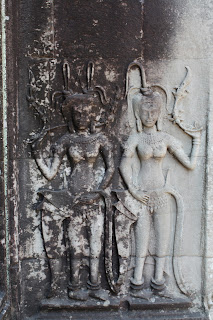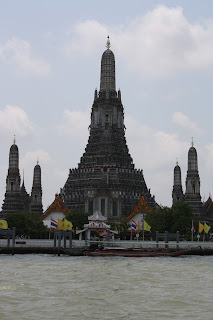Today I found ten rupees in my laundry and, for a split second, I snatched it up, thinking that I could buy water with it later. Then I remembered that I am not in India or in Asia for that matter; I am back home in Murfreesboro Tennessee.
After 3 overnight flights, multiple 10 hour layovers, an ear infection, a bruised breast bone, and 5 nights of much-need sleep, I think that I am finally awake and well enough to write this last post. And since I’ve already given you all of my thoughts on all the various countries I’ve travelled to, I think I’m going to end this on a more personal note.
In my wallet, I carry two fortunes cookie fortunes. The first reads, “Fear knocked at the door. Faith answered. No one was there.” I found this in my pocket just after a big break-up summer before senior year when I was living in New York City. Then, I believed that I needed to have faith in the connection that I had had with that person and in what I believed that we could have again—faith in him and in what we had built. Almost two years and another break-up later, I still find this slip of paper meaningful. During these trips, I have started to have faith in myself and what I can accomplish on my own—that I can be happy and successful alone. But I also have faith that I will find that kind of love again and, so instead of shutting myself away and putting up my guard, I will let myself open up just as easily as I always have. And love just as easily as I always have. I still have faith in people—that at the end of the day almost everyone means well. Call me naïve if you want, but even after being scammed a million times over in Asia, I still believe that.
The second and more recently discovered fortune that I carry around says, “You get in life not what you want. You get in life who you are.” In taking this time to travel, I have begun to accept something about myself. Together, my goals, personality, and interests, have not laid out an easy road for me. And to be honest, I really never have made easy choices even when I should have. If I am lucky enough to get to do what I want to do, I’m going face another decade of tight finances, hectic and difficult trips to the developing world, months of job rejections, and years of tests. But that’s okay. This path might not be conducive to relationships, friendships, or my annoying need to hermit and put in roots everywhere I go, but I do have faith that, because I am on this road, that the people in my life (as most of them already are) will end up being just as determined, passionate, and committed as I hope to be. And in terms of relationships, specifically, I’m just going to have to learn to love and get hurt for a little while until I come across that rare combination. But most importantly, I need to really accept this about myself. Not to just say it, but to know it.
I originally decided to go on this trip as something exciting to do with a boyfriend (which is kind of why I’ve been talking/thinking about relationships so much), but I ended up keeping my plane tickets, because I wanted to prove to myself that I could do it. That I could be alone. That I wouldn’t fall apart and have bouts of homesickness everyday. That in the past two years, I had grown. That I was stronger. This isn’t to say that my two months away have been miserable. Well sure, spending a week in paradise on Koh Phi Phi Don was rough I guess. And Bob’s booze cruise didn’t quite live up to my expectations. Seeing friends was another real downside. JOKES. Hopefully, by now most of you know that this trip was great. More than great. Amazing. But parts of it were ROUGH—India especially. And I think that I’m coming away from those not so great experiences with the faith that I needed to find in myself and with the acceptance of parts of myself that I have either been trying to change or bury.
And as cliché as it may sound, I think that writing this blog has really made me hold myself accountable to be more honest with myself and to really think about what I see rather than just make a small mental note of it. So thank you so so much to everyone who has been reading. And to those of you that ventured on over to that side of the world with me. LOVELOVELOVE all of you!
So this it for now. This Ginger has now been to North America, South America, Europe, Asia, and Africa. She has not just swum in but skinny-dipped in the Atlantic, Pacific, and Indian Oceans. Until Australia, then.



























